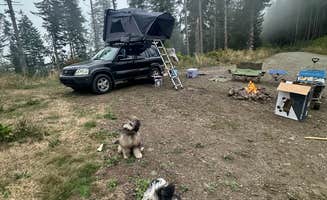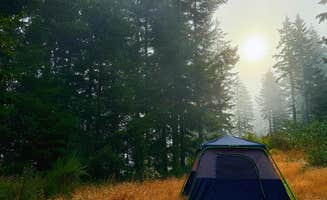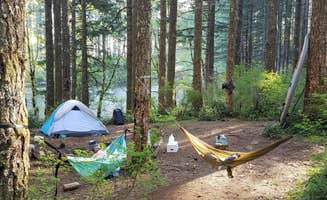Primitive camping near Philomath, Oregon offers secluded sites across multiple national forest and BLM lands. The region sits where the Willamette Valley meets the Coast Range, creating diverse terrain ranging from 200-3,000 feet elevation. Most dispersed camping areas open from May through October, though seasonal road closures can extend into June at higher elevations during wet years.
What to do
Fishing at small lakes: At Hult Pond Recreation Area, fishing opportunities abound for those seeking largemouth bass. "The pond was great for kayaking and there is plenty to explore if you aren't worried about a little elevation in your hike," writes Nicki G. Another camper reports practical success: "The fishing was pretty decent caught three largemouth bass."
Watercraft recreation: Several dispersed sites provide access to calm waters. At South Lake, "The lake is stocked with trout which have been biting like crazy. Most times when you go up there you will see them jumping clean out of the water," according to Tawnya B. Note that some sites have restrictions on motorized boats.
Hiking nearby trails: Forest roads often connect to trail networks. "We also met other campers that had hiked a trail from Hebo lake to South Lake which was about a 7 mile hike for them," notes Tracy H. The Kentucky Falls area offers shorter trails to viewpoints with sunset views.
What campers like
Complete disconnection: Many sites offer true separation from digital life. "We lost cell service about an hour before we even got there, and didn't have any the whole time there," writes Grace A. about Hult Pond. This creates opportunities for genuine outdoor focus, though requires advance planning.
Wildlife viewing: Forest Road 51 near Beaver Creek provides access to beaver habitats. "I did see about 5 beavers close to the road though, so that was sweet," reports Dylan B. Bird watching is particularly good at dawn near water features.
Star viewing: Clear night skies offer excellent astronomy opportunities. "Very quiet, lovely views of the sky at sunset," writes Anna P. about Forest Road 51. Campers report minimal light pollution, especially at higher elevation sites where tree cover opens up.
What you should know
Road conditions vary significantly: Roads to remote sites can challenge vehicles without proper clearance. At Suislaw National Forest Dispersed Camping, "Excellent spot up 2 steep inclines. Some of the most beautiful views. Good fire ring. Do not attempt if wet," warns Connor G. Always check recent road reports before heading out.
Limited turning spaces: Many forest roads have few places to turn around larger vehicles. "My trailer could barely fit through and there was only a three-way intersection inside to make a U-turn, otherwise my trailer wouldn't be able to get out!" explains Leo Y. about Forest Road 51.
Arrive early for prime spots: Competition for the best dispersed sites increases on weekends. "Only a few good spots and they go fast so definitely get there early to get a good spot," advises Dax S. about Hult Pond. Weekday arrivals significantly improve site selection options.
Tips for camping with families
Campsite spacing considerations: Some areas provide better separation between groups. At Quartzville Recreation Corridor, "Some spots have 2 or 3 fire rings per pull out and would be good for a small group." This allows families to create communal spaces while maintaining privacy.
Accessibility to facilities: When camping with children, proximity to toilets matters. "We managed to get a spot that was a 1 minute walk to the water, and about the same to the vaulted toilets," notes Gerard R. about South Lake. Many sites have no facilities at all.
Bug protection essential: Insect activity varies by season and location. "So many many many bugs though at the area we stayed at," cautions Dillon & Soren A. at Hult Pond. Bring appropriate repellent, especially for camping near water.
Tips from RVers
Length restrictions: Forest roads can limit RV access based on size. At BLM Kentucky Falls Road, access requires careful navigation of paved roads that transition to gravel. "We have a 38 foot rv. We got stuck in a ditch. Rv almost tipped over trying to u turn," warns one Hult Pond camper.
Low clearance challenges: Many dispersed sites require high-clearance vehicles. "I probably wouldn't do this if I had a trailer or an rv, but my toyota Corolla did just fine," notes Shelby S. about Forest Road 51, indicating that careful drivers can access some areas even in passenger cars.
Limited site options: RV-suitable sites are fewer than tent options. "If you go past the first 2 spots through the bushes last spot on the right is most private and spacious," advises Alicia W. about Forest Road 51, highlighting the need to scout sites before committing to parking large vehicles.





